Eagle Games, Part One
The title of this post is a little misleading. One the one hand, bald eagles are supremely pragmatic regarding most of their activities. They seem to do no more than necessary in satisfying the most obvious eagle goals, especially getting enough to eat. So eagles don't come to mind as a species inclined to play, such as crows. On the other hand, they are sometimes observed doing seemingly less-essential activities. Most prominently they engage in flight maneuvers that some humans might interpret as pleasurable.
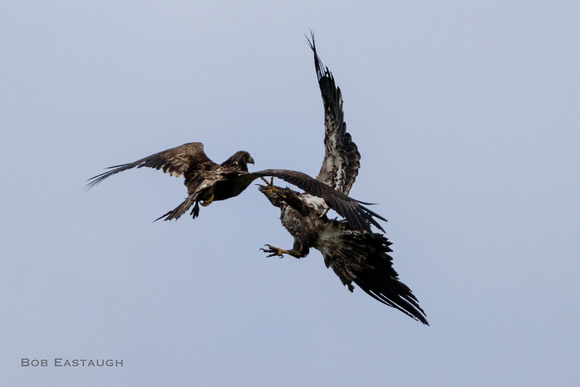

In reality, these maneuvers may be essential training for aggressive posturing or actual conspecies combat, or for predation, since eagles sometimes take food in flight from other birds, including other eagles. Eagles have been reported to have attacked Canadian Geese by flying below them and then rolling over to attack the geese from below with their talons. Aerial displays may also be part of mating displays, in which a male tries to impress a potential mate of his flight prowess. Even though bald eagles are not nearly as agile in the air as many other birds, they remain powerful flyers whose aerial maneuvers are impressive.
Here a mature bald eagle forces an immature bald eagle to give up its prey, a small herring or perhaps eulachon.


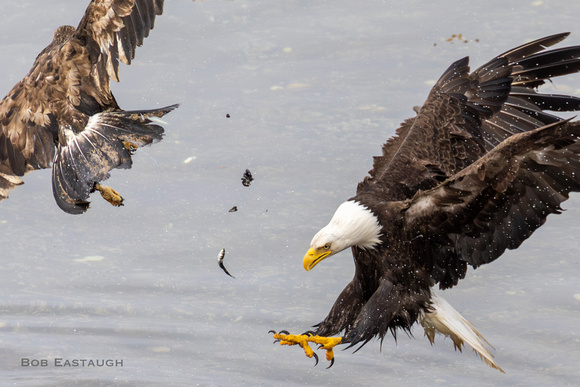

Other behaviors such as carrying sticks or transferring them in flight have likewise been characterized as potentially playful even though stick carrying is part of nest building and nest maintenance. Whether practicing a useful activity may also be "fun" for eagles is unknown.
This post depicts a recent episode of behavior involving three bald eagles and an obviously non-edible man-made object (a dog's rubber ball), so hunger was apparently not a motivation. Does it imply the eagle subjects were having "fun" in an eagle sense or were playing "eagle games?"
The object: a rubber space-ball toy, with its usual possessor:


A strikingly colored immature bald eagle took possession of the ball by landing next to it. The eagle investigated the object and then alternately clutched it with its talons or beak. Another immature eagle and a mature adult looked on with interest. That the other two eagles seemingly wanted to take possession from the "owner" could indicate curiosity (there is no reason to assume eagles are mentally incapable of curiosity, especially given their constant search for food sources and investigate things that might contain something edible) or perhaps a possessive streak useful for food possession and conspecies predation. Practicing how to retain possession or force dispossession likely has practical value. Studies have shown that even in food-rich locations, where there is no lack of opportunity for bald eagles to secure their own prey, perhaps 50% of the food of the subject bald eagles was nonetheless taken from other bald eagles. So, whether it reflects ingrained or learned behavior, possession of even inedible objects might reflect an aspect of eagle behavior. Possession for the sake of possession, and perhaps also for the purpose of displaying and maintaining dominance, may be valuable. It might also reflect an interest in exploring and manipulating any found object. And it might even reflect an interest in having "fun" in an eagle sense, i.e., in the sense of keeping something from another eagle, or, more likely, establishing dominance.
The three protagonists, and the object of their desire:


The mature adult soon advances with purposeful strides, neck extended, head lowered (a characteristic eagle aggression posture).
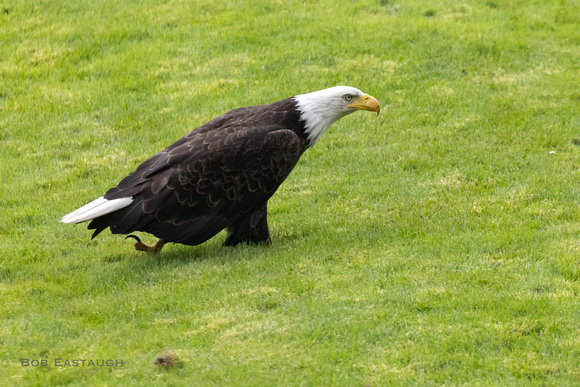

Then the other immature eagle steps forward.
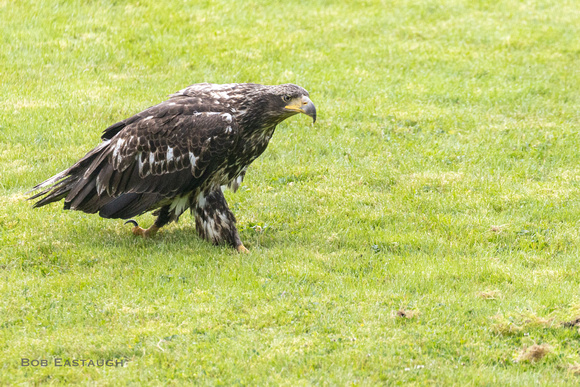

The strikingly colored possessor retains ownership after a brief flurry of aggressive posturing displays. En passant, they pass, seemingly without contact.
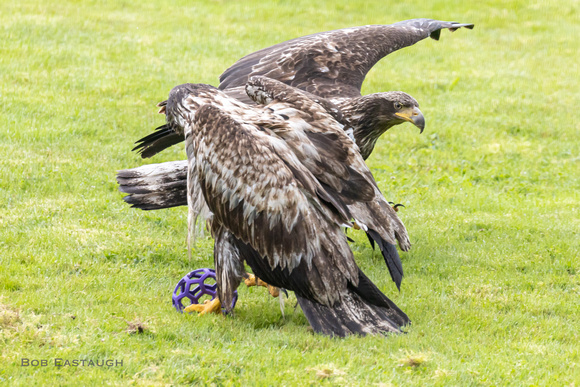





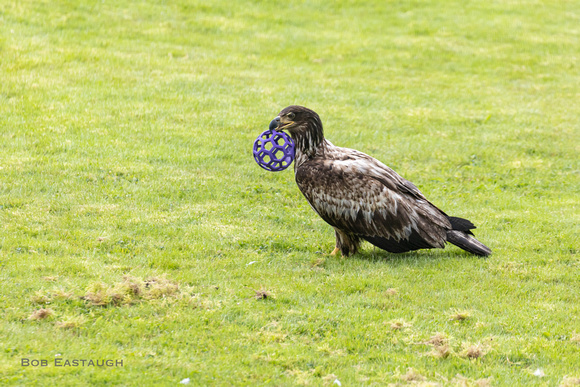

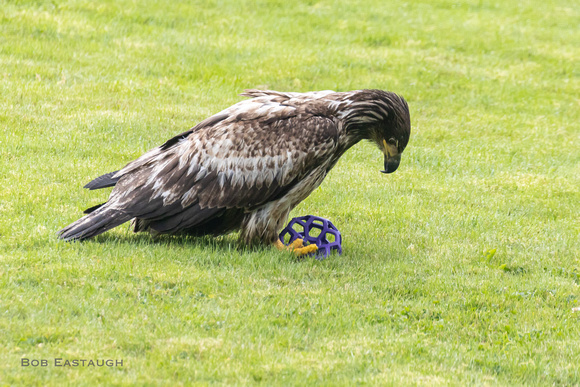

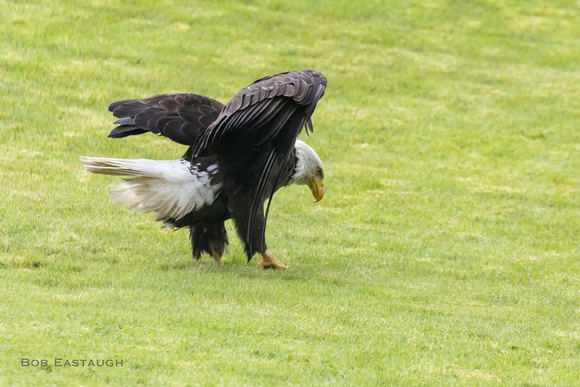

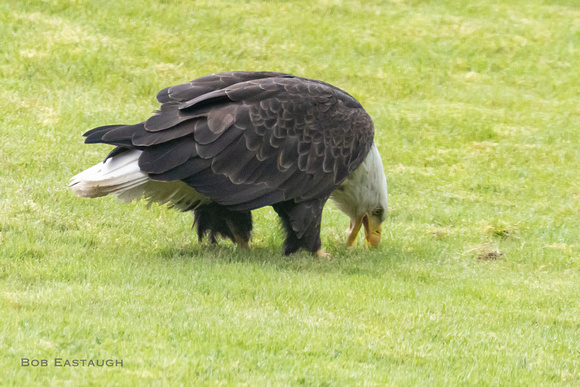

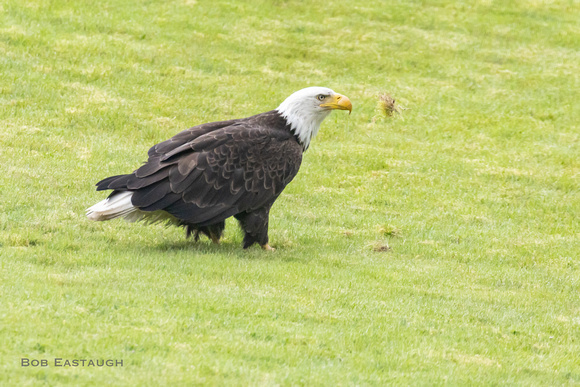



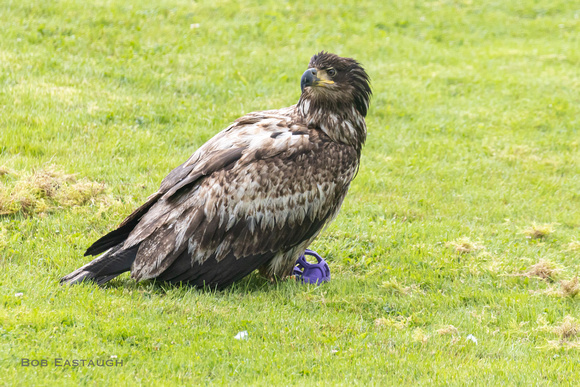

The mature adult stalks off, around the maple tree, and flies away.




Victorious, the "owner" remains watchful, because the adult flew off but circled around overhead.
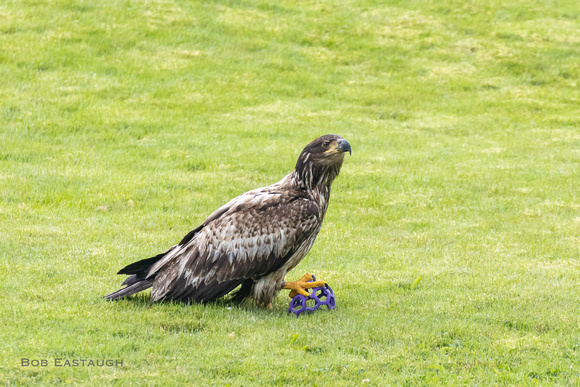



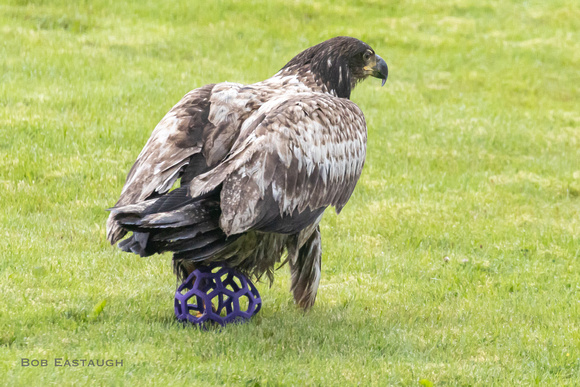

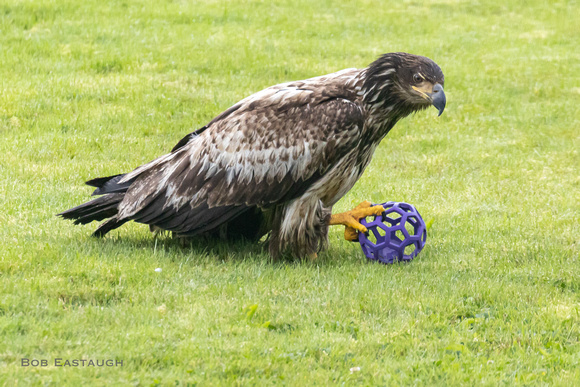

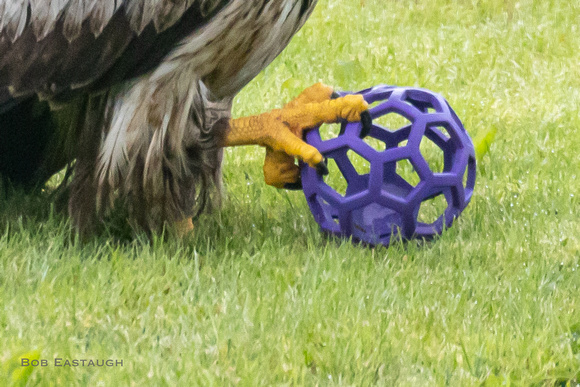

Now firmly in possession, the owner takes flight, still clutching its treasure. Barely clearing the berry patch, it flies away, seemingly on a flight path to perch high in a neighbor's spruce tree.
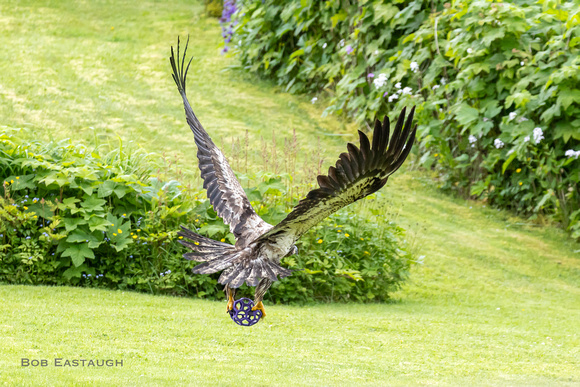

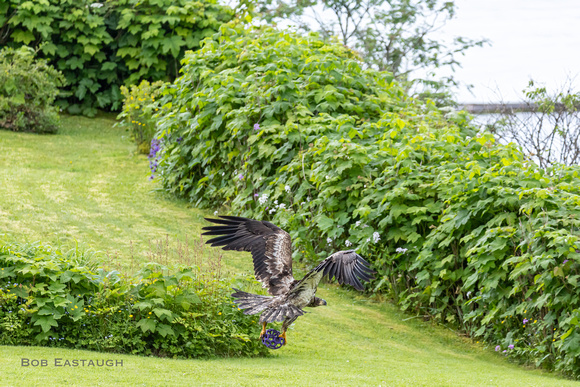

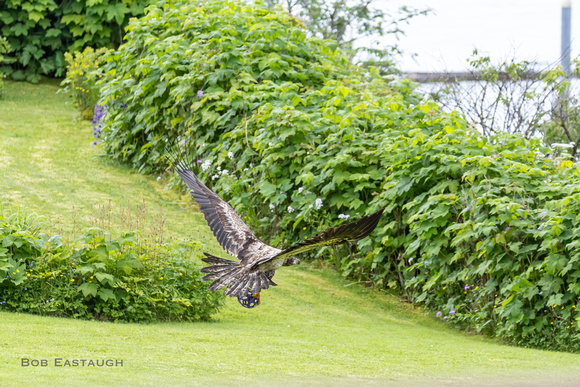

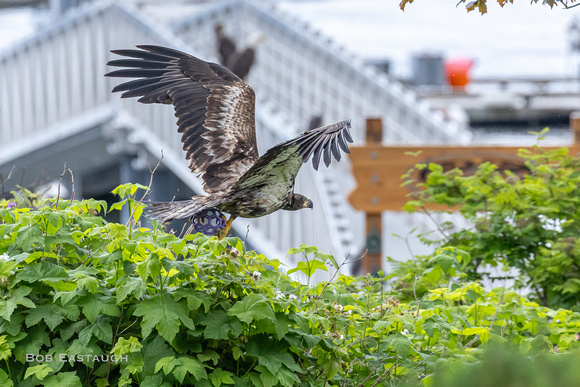

Epilogue: The ball seemed to be gone forever, presumably destined to wind up temporarily in a nest before falling into impenetrable foliage on some inaccessible hillside. So what actually happened was a surprise. The next morning, the ball was on the ground, back on the owner dog's side of the fence. After the eagle had flown off clutching the ball, the neighbors found the ball on the ground on their side of the fence, so they threw it back over the fence. The eagle must have intentionally dropped the ball to perch more securely high in the neighbors' tree. It happened to fall where the neighbors could see it and return it.
